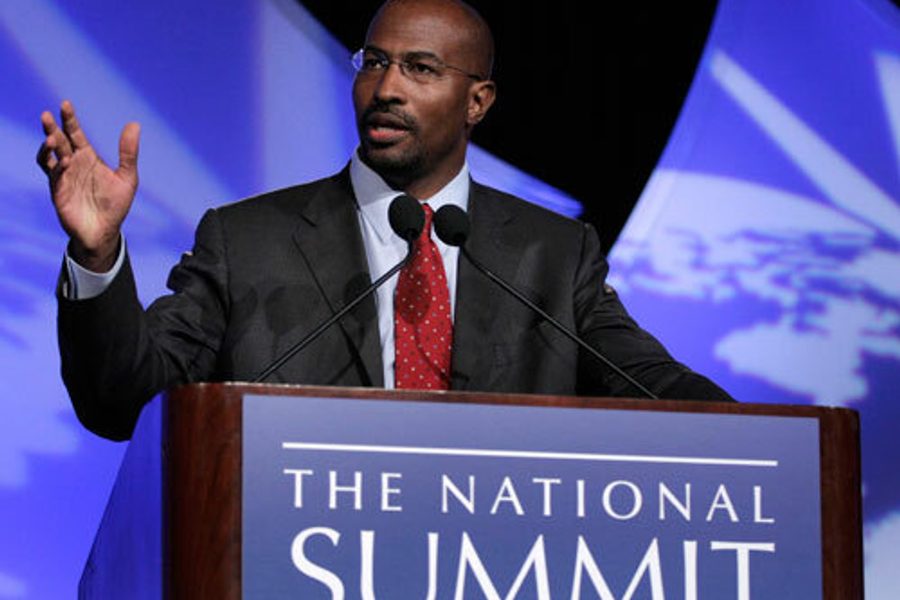
As I mentioned in a previous post, there is much murkiness and hype surrounding the question of what exactly green jobs are, and who will actually get them.
In an ideal world, increasing public, corporate and governmental concern about climate change and environmental justice will lead to a mushrooming of green jobs, which could tackle everything from brownfield clean-ups to planting urban farms.
Theoretically, a federal greenhouse gas-controlling climate bill, an uptick in corporate responsibility and an infusion of federal stimulus dollars could lead to funding for thousands of such jobs.
But how things will actually play out remains to be seen.
During a conference hosted by the Institute for Justice and Journalism on July 28, a Chicago expert in community development and investment sounded a cautionary note.
Emphasizing he was offering his own views and not a company position, Joel Freehling described what he calls the “Van Jones Conundrum” and challenged the environmental justice guru’s visions of lifting otherwise marginalized and unemployed people out of poverty through green jobs.
Freehling — manager of “Triple Bottom Line Innovations & Sustainability” at ShoreBank, a Chicago bank created with the mission of bolstering local communities, promoting economic integration and protecting the environment while making a profit — would apparently love to see this happen.
But he wonders if the most vulnerable, needy and previously unemployed people will really be equipped for the green jobs that do materialize.
And he emphasized that given the urgency of curbing climate change, society can’t necessarily afford any compromises in efficiency and effectiveness that might be made in the course of trying to channel green jobs to those who need them most.
During a Chicago visit July 30, U.S. Environmental Protection Agency (EPA) Administrator Lisa P. Jackson celebrated a half-million dollar grant meant to train needy Chicagoans for jobs cleaning up brownfields on the city’s south side and in the suburbs. At the Center for Green Technology, Jackson said:
The Recovery Act is not only helping to train individuals for good jobs in their communities, it’s helping them rebuild a lasting foundation for prosperity.
By restoring undeveloped lots through the Brownfields program, or weatherizing buildings to lower energy costs, these workers will generate new economic possibilities, bringing new opportunities and jobs here.
The money will go to a Chicago nonprofit called OAI Inc. to train 80 workers, with plans to place at least three quarters of them in environmental technician jobs. It is an encouraging start, though it is a bit daunting to consider that almost $10,000 will be spent per worker hired, an amount that few corporations would likely extend on new workers without a government subsidy.
In all, the Obama administration has promised half a billion dollars for green job training. This is an outgrowth of the Green Jobs Act of 2007 (PDF link), which authorized $125 million a year (as part of the Workforce Investment Act) to train workers for energy efficiency and clean energy sectors, and prioritized 20 percent of the total funding to create “green pathways out of poverty.”
Interestingly, the National Association of Homebuilders- has expressed displeasure about provisions in the bill that would support organized labor.
U.S. EPA Region 5 spokesman Mick Hans said the agency does expect greatly increased funding for brownfield cleanup, which hopefully will create a significant number of jobs, though exactly how many and who will be hired to do them remains to be seen. The U.S. has about half a million brownfields.
“Hopefully there will be enough green job activity that there will be jobs for people in every category” of previous experience and training or lack thereof, Hans said.
Kari Lydersen is a Chicago-based journalist, author and assistant professor at Northwestern University, where she leads the investigative specialization at the Medill School of Journalism, Media, Integrated Marketing Communications. Her books include Mayor 1%: Rahm Emanuel and the Rise of Chicago’s 99%.








